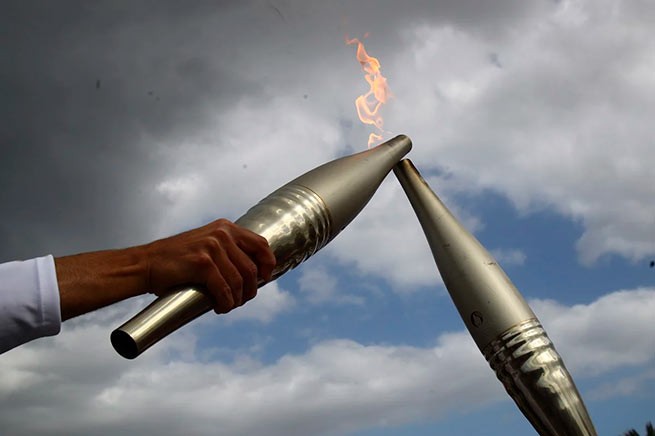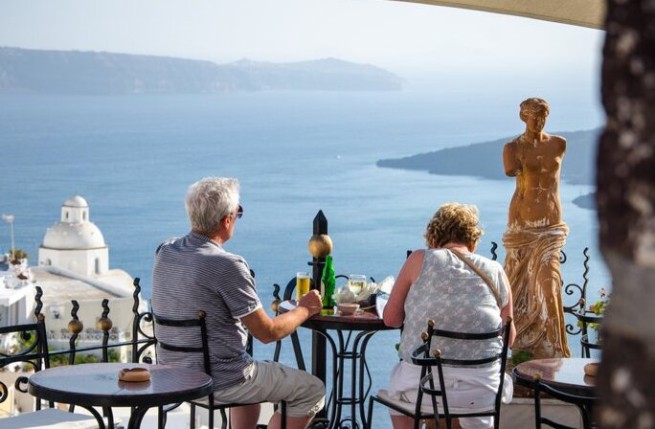A captivating drone video showcasing the Temple of Poseidon captures the glory of an ancient site located at the southern tip of Attica at Cape Sounion.
The temple is one of the main monuments of the Golden Age of Athens. Located in a stunning location on a promontory, it is surrounded on three sides by the sea. Just a short bus ride from Athens city center, Sounion and the Temple of Poseidon are great choices for a quick day trip from the Greek capital.
The Temple of Poseidon on Sounion was built during the reign of the Athenian statesman Pericles, who also rebuilt the Parthenon in Athens in 444-440 BC.
Perhaps this is how the temple looked after it was built in 440 BC.
The strikingly beautiful structure, towering almost 60 meters above the sea, was built on the ruins of an earlier temple dating back to the archaic period, also dedicated to Poseidon. While there is evidence of its destruction at this site, it is unclear who destroyed the archaic temple at Sounion.
Many believe that since it was established that the temple was destroyed around 480 BC, the Persian forces led by Xerxes should have destroyed it. While there is no direct evidence to support this claim, unfortunately persian troops indeed destroyed a number of temples and monuments in Greece during the war, including all archaic buildings on Acropolis in Athens .
The temple is made in a typical hexastyle, which means that the front portico has six columns.
Reconstruction of Cape Sounion with a fortress and two temples
The temple was supposed to contain a huge image of Poseidon
Today, only a few of the columns of the Temple of Sounion have survived, but intact it would very much resemble the modern and well-preserved Temple of Hephaestus under the Acropolis, which may have been designed by the same architect.
Inside the temple stood a massive bronze statue of the god Poseidon, no less than 6 meters high.
Like all Greek temples, Poseidon’s building was rectangular, with a colonnade on all four sides. The total number of original columns was 36: fifteen of them still stand today.
The columns are of the Doric order and are made from huge blocks of locally produced white marble.
On one of the columns, visitors can still see the inscriptions made by the famous philhellene and romantic poet Lord Byronom who carved his name on the marble. He was not the only one to leave his mark. Since ancient times, visitors to the beautiful temple have been tempted to mark their presence by leaving their autographs on marble blocks. However, visitors are now prohibited from approaching the stunning temple.
The earliest excavations and studies of this beautiful site were carried out in 1797 by British nobles.






More Stories
Best Sunset in Athens – Ideal Viewpoints
Naxos in the spotlight of the international press
Where to go for Easter